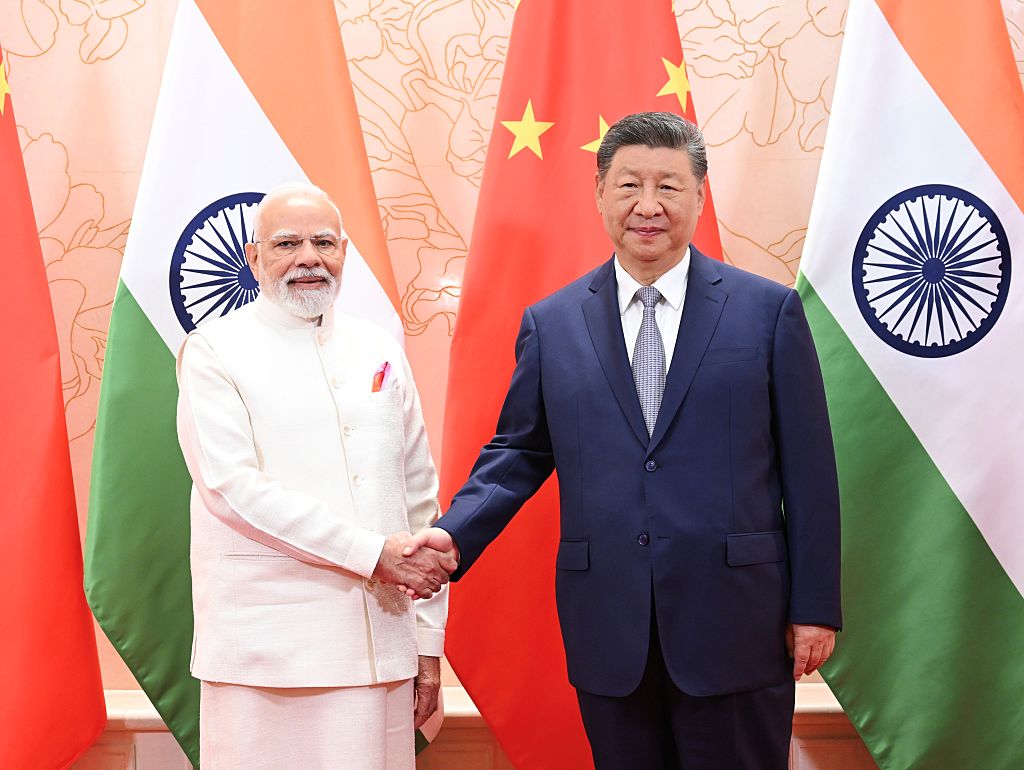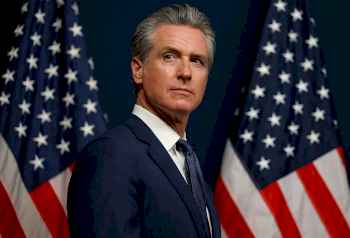Why India and China Remain Bitter Rivals

Visuals of exaggerated cordiality between the Prime Minister Narendra Modi of India, President Vladimir Putin of Russia, and President Xi Jinping of China at the Shanghai Cooperation Organization summit on September 1 displayed China’s convening power. But the gathering of major non-western leaders in Tianjin, a city in eastern China didn’t do much to resolve the long standing border dispute and competition between India and China.
[time-brightcove not-tgx=”true”]China has sensed the growing distance between India and President Donald Trump’s America in the aftermath of the U.S. tariff assault on India and the intemperate and disparaging statements hurled at India by Trump, his Treasury Secretary Scott Bessent and his trade advisor Peter Navarro. China lost no time in extending support to India against American bullying, and President Xi Jinping of China extended a warm welcome to Modi in Tianjin.
In one of several choreographed gestures suggesting a special and intimate relationship between Russia and India, Putin gave Modi a ride in his presidential limousine to their bilateral meeting in Tianjin. India’s relationship with Russia has diminished in scale and importance over the past few decades while Russia has cemented its “no limits partnership” with China, which remains India’s primary adversary.
At the summit, Putin also sought to revive the Russia-India-China trilateral forum, that, in an earlier era, helped midwife BRICS and the SCO and gave China, India, and Russia an arena to coordinate on multilateralism and trade. But the Russian president had to settle for a visual substitute: an orchestrated “pull aside” with Xi and Modi. When there is much spectacle, substance limps behind, and that must be the judgement of what was achieved between India and China at Tianjin.
The road to Tianjin
The run-up matters. The Modi-Xi Jinping summit at Tianjin was especially significant because the two leaders were meeting for the first time in China since the deadly clashes between Indian and Chinese forces in Galwan Valley in the Himalayan Ladakh region in the summer of 2020. (They had met earlier in October 2024 on the margins of the SCO summit hosted by Russia at Kazan.)
The meeting was enabled by India and China finally completing the disengagement of thousands of soldiers each deployed at the border in close proximity. Yet Beijing has not accepted New Delhi’s demand for the next step—de-escalation and de-induction of the forces back to rear bases—leaving the basic military equation tense and provisional.
Before the summit, China’ foreign minister, Wang Yi traveled to New Delhi and the two sides agreed to a new working group to consider measures to enhance peace and tranquility at the border, and an “early harvest” package to steady their disputed border. That idea is not new.
In previous negotiations, Beijing has repeatedly suggested segmenting the border dispute—settling the largely uncontested Sikkim-Tibet sector of the border—before addressing the rest. India would insist on settling all segments of the border simultaneously. New Delhi’s willingness to a segmented approach would mark an important departure from India’s long-held position. And it would leave the larger dispute unresolved.
Read More: How China Is Broadcasting Its Might
The meeting in Kazan helped New Delhi and Beijing take small steps toward a detente: a limited reopening of travel, including the resumption of a religious pilgrimage from India to Kailash Mansarovar in Tibet; restarting direct flights suspended during the pandemic; and the resumption of senior-level exchanges among foreign ministers and national security advisers.
Tianjin has helped build on that thaw. While the normalization of India-China relations predates Washington’s tariff offensive on India, the Trump Administration’s willingness to upend the global trading order—and singling out India—has undeniably added momentum.
What drives the India-China relationship?
Shifting geopolitical equations do influence the India-China dynamic but the course of the relationship is determined by its own drivers. The central factor is the growing power asymmetry between China and India, and Beijing demanding deference within Asia—a hierarchy India resists. China speaks of its preference for multipolarity globally but doesn’t apply the same logic to Asia. India insists that a multipolar world requires a multipolar Asia.
The difference was visible in Tianjin. New Delhi has consistently asserted that resolving the border issue is indispensable to the pursuit of economic partnership and the broader normalization of the India-China relationship. Beijing insists that the border issue should not define the relationship. Xi Jinping emphasized economic partnership as the bedrock of India-China relations. The chasm endures.
Then there is Pakistan. China’s “iron brotherhood” with Pakistan places clear limits on the opportunities for India and China to establish a durable, peaceful and cooperative relationship. Beijing’s relationship with Islamabad has long served as a low-cost, low-risk proxy strategy to constrain India, from nuclear enablement in the 1980s to the steady upgrading of Pakistani military capabilities.
In the brief India-Pakistan war this summer that followed the massacre of 26 Indian tourists in Kashmir, Pakistani forces used Chinese weaponry. For the first time, Beijing directly supported Pakistani military operations by providing targeting and surveillance and participating in electronic warfare against Indian aircraft and missiles. Indian fears of a two-front war with China and Pakistan are becoming a reality.
Pivot to Asia
All of this shapes India’s policy toward China to manage an adversarial relationship with limited cooperation and convergences. A shared determination to prevent Chinese hegemony over Asia explains India’s deepening alignment with the United States—a relationship with bipartisan political and popular support in both countries for over two decades now.
The U.S. Indo-Pacific strategy, aimed at maintaining American pre-eminence in Asia, has been a welcome support to India in constraining Chinese influence in a region where the security peripheries of the two Asian rivals overlap. The revival of the Quadrilateral alliance between the U.S., India, Australia, Japan, or the Quad; the Australia-U.K.-U.S., or the AUKUS, nuclear submarine alliance; and a strengthened trilateral with South Korea and Japan are important prongs of the U.S. strategy to limit the expansion of Chinese power in the Asia-Pacific. One of the primary aims of this strategy is to deter a military takeover of Taiwan by China. If China is able to take Taiwan by force, the strategy would fail its most visible test.
Donald Trump and the age of uncertainty
Trump’s second term is creating uncertainty in Asia. Some signs from Washington suggest that President Trump is less committed to defending Taiwan than his predecessors. American commitment to AUKUS is reportedly under review. Trump is expected to skip the Quad summit in India later this year.
Set these developments against Trump’s repeated professions of his excellent relations with China and his eagerness to visit China to make a “big deal” with Xi Jinping, and anxiety rises in India and among other American allies in the region as they see the unnerving prospect of a G-2—a U.S.-China collusion—being resurrected.
Read More: Modi Can’t Afford to Cut Ties with Trump
In 2009, President Barack Obama and his advisors pursued the idea of G-2 and “strategic reassurances” between the U.S. and China but it did not fructify beyond rhetoric due to Chinese overreach and the Obama Administration declaring its “pivot to Asia” to focus U.S. military, economic, and diplomatic resources to contain China. The U.S. commitment to the pivot to Asia remained half-hearted. Ironically, it is Trump who, in his first term, prioritized the Indo-Pacific strategy and revived the Quad after years of drift. President Trump now appears ready to dismantle this. Beyond the current tensions in India-U.S. relations, these developments are causing greater concern across the region.
Right now, China is not reciprocating Trump’s repeated overtures. Several Chinese commentators are convinced that the U.S. is self-destructing under Trump and China is well-placed to push aside its peer rival at little cost to itself. Without doubt, the main geopolitical beneficiary of Trump’s upending of the global order has been China.
Illusions of friendship
China displayed its convening power at Tianjin and Beijing’s claim to leadership of the Global South is gathering momentum. Xi Jinping conveyed to Modi that India and China were part of the Global South and should work together to champion the interests of developing countries.
Modi did not echo these sentiments in his reply, which raised questions about whether he was implicitly contesting Xi’s claim to leadership of the Global South. Xi also invoked Panchsheel—the five principles of peaceful coexistence jointly enunciated by India and China in 1954—but Modi chose not to respond.
Xi and Modi leaders did agree that China and India were partners not rivals. But this should be treated as an expression of hope instead of a reflection of reality.



